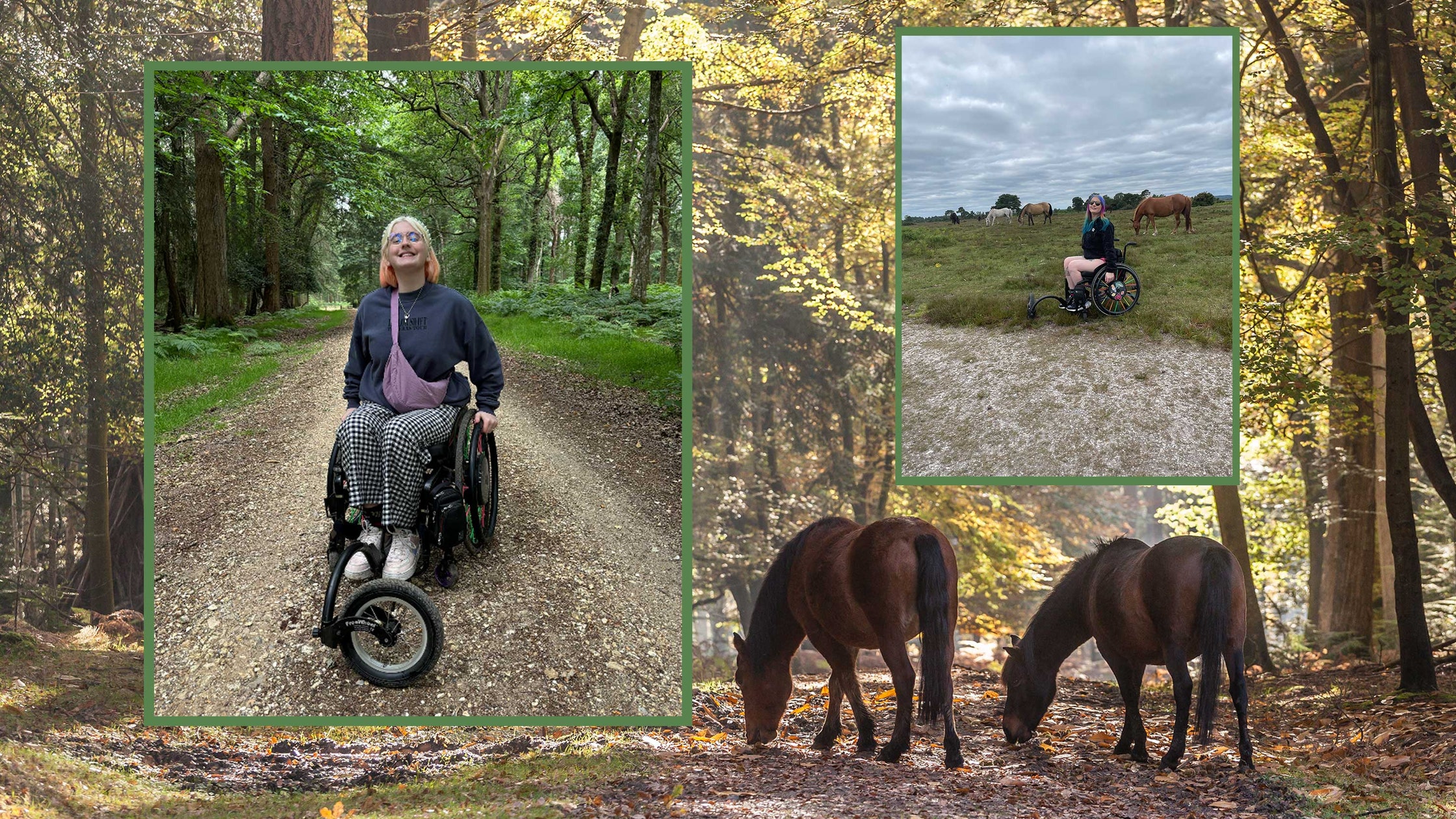Welcome to Travel Without Limits, a limited series dedicated to all things accessible travel. For World Disability Pride Month, we’ve asked some of our favourite Disabled travellers to share their most impactful experiences and transformative travels.
I’ve always loved being in nature. There is just something about the quietness, the fresh air, and the wildlife that helps my brain to switch off. For me, nature allows me to put my everyday struggles into perspective. It allows me to think through problems and makes it easier for me to make sense of my thoughts.
I became a wheelchair user around four years ago. Before, I would often go out on long hikes and spend a lot of time outside. I started noticing that it would take me longer to recover from these activities. Or, for that matter, most activities – seeing friends, going shopping, travelling; all of it would take it out of me. I am also autistic, which means that I can find certain things, like going away on holiday, pretty difficult. Travelling involves a lot of new, different experiences that I find hard to process.
When I started working a 9-5 job, I began to really struggle. I regularly took sick days or begged to work from home (this was before the pandemic, when working remotely was a rare concept), and I would spend most of my weekends recovering. As time went on, my health declined. My medical team decided that getting a wheelchair was the next step in order for me to be able to live with more independence. This prospect made me very nervous for many reasons, but the one resounding thought I couldn’t shake was, “how will I go out in nature?”
Finding accessible nature isn’t the easiest thing to do. First of all, I live in London, so big green areas aren’t hugely available, and those that are tend to be quite busy and can feel overwhelming. Beyond that, the great outdoors aren’t the most accessible for those with mobility impairments – rocky, unstable terrain is naturally not the easiest to navigate on wheels.
Desperate for some green respite, I began researching accessible places to visit. Eventually, I stumbled upon the New Forest, an area in Hampshire. It looked so beautiful, with a huge variety of landscapes and lots of wildlife – there are even wild horses that roam around.
What was even better was the discovery that the New Forest is fairly flat and has some of the most amazing wide paths. This meant that the routes would be fairly accessible for me in my wheelchair and never felt overly crowded. I immediately began plotting my visit.
My first job was to try and find accessible accommodation. This isn’t always easy as a wheelchair user – many places simply don’t cater for mobility-impaired travellers. However, I was thrilled to find that there are several hotels right inside the New Forest that are step-free. As an ambulatory wheelchair user, I have some freedom in the types of accommodation I could stay at, but it was still reassuring to find that many hotels in the area had accessibility features in place.
Beyond the accommodation, I was pleased to see that the surrounding areas were accessible, too. Finding somewhere to eat as an autistic wheelchair user isn’t always easy; I need to find a place that has an environment and menu I can enjoy, which is even harder if you have dietary restrictions (I am gluten intolerant). Many of the local towns and pubs in the area offered various features, like having an accessible toilet and allergy-friendly menus.
Visiting the New Forest for the first time felt like a breath of fresh air. As soon as you enter, you are suddenly met by nature. The New Forest is famous for horses, but we also saw pigs, donkeys, snakes, lizards, frogs, lots of spiders, diving beetles, deer, rabbits, mice, and foxes. It is wonderful to see so much of the wildlife that the UK has to offer all in one place. Being able to experience nature without needing to worry that the path might not be step-free or spending hours researching the area’s accessibility felt amazing.
I was astounded at the dedication to accessibility. Whenever possible, accessibility features were implemented. All of the cycle lanes were wheelchair-accessible. There were accessible toilets, accessible parking spots, and even an accessible cycling company. It was truly a dream come true.
It made me think even more about how frustrating it is when other places don’t consider accessibility. There are simple things that can be done to make green spaces more available to Disabled people. For instance, listing access to the walks online, confirming whether toilets are accessible, removing any unnecessary stiles, or making them adaptable are all straightforward ways to enhance the accessibility of public nature parks.
I cherished the fact that, after so much time worrying about how I would access nature, I was suddenly fully immersed in it once more. It felt as though nature was built into the fabric of this place. Everything is centered around it. Even the pub we had lunch at had a water butt outside for the horses and donkeys to drink from.
The older I get, the more I have come to terms with the fact that I find travelling challenging. However, it doesn’t mean that I can’t still enjoy my time away in a way that is fulfilling for me. Therefore, discovering this beautiful green space that seamlessly catered to my needs was truly special. It served as a great reminder that you can still have holidays full of adventure and experiences in places that are local and easily accessible. I try to remember not to be hard on myself if I’m struggling; there is much pressure on holidays to be perfect, but it’s okay to only enjoy parts of them.




